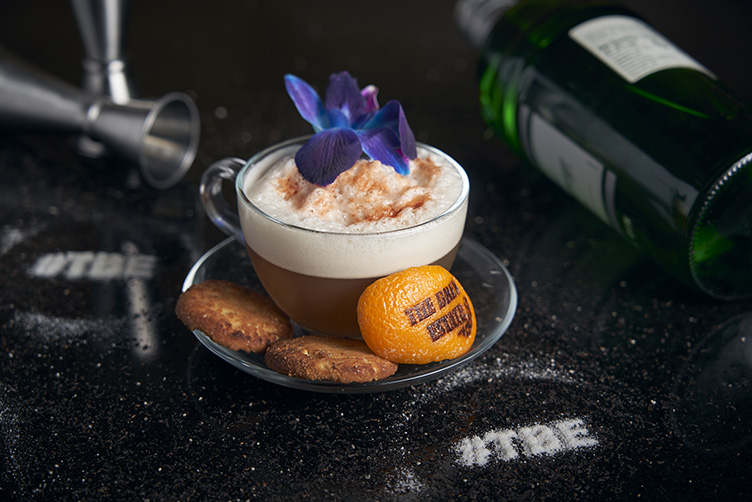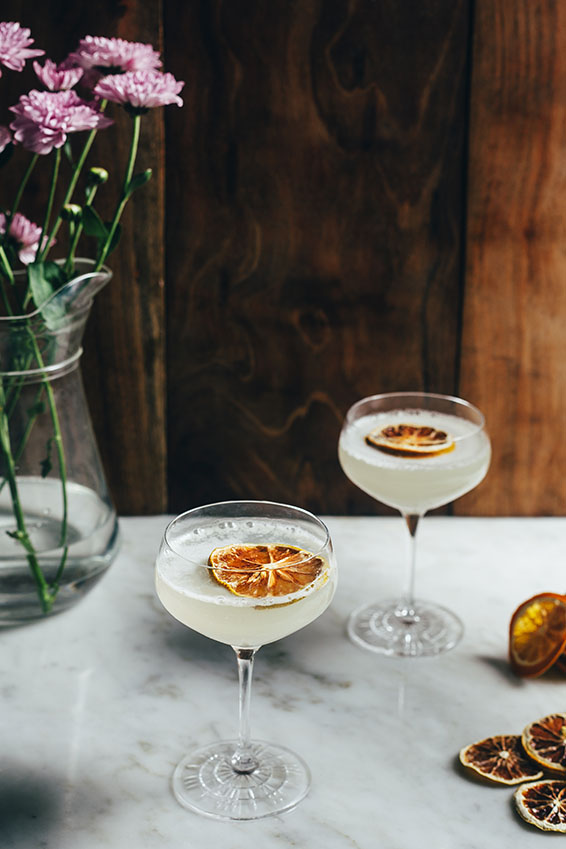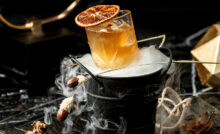The Rise of Gin-o-Mania


From gin workshops, to gin parties, gin menus and even a bar based on the famous 17th century tippler, here’s how India is celebrating Ginaissance.
By Madhulika Dash
Since its arrival in India around the 1857, Gin has been a classic feature of the India’s bar culture, albeit a shy one. Gin’s rise as a drink was first as the afternoon drink for the British, who loved it for its floral notes and a smooth mouthfeel as much as an antidote to vagaries of a warm climate; then, as a tippler around which the little mining towns developed. Gin and tonic (the made-in-India, non-carbonated kinds), says Chef Sabyasachi Gorai (Chepreneur, Lavaash by Saby), was in fact, a popular drink at the local bars in places like Asansol. It was a drink that not only built a sense of community but was also a coming of age drink for many.” Chef Gorai is among the few Gin-lovers who have had the famous Gin & tonic in its different iteration: essentially, says seasoned bartender Yangdup Lama (co-owner, Sidecar). “in its non-carbonated form and the more popular flavoured carbonated tonic mix as well.”


Such was the popularity for this easy-to-produce and easy-on-the-palate spirit that Gin, which took a backseat to whiskey, that it remained the ‘celebratory toast” for Christmas parties and get-togethers in the forces, and a lady’s drink too. The thing, says beverage programmer Aman Dua, “that worked in favour of Gin is that while it has this beautiful botanical note of juniper, it is a clean spirit that can be cleverly blended with interesting spices and beverages to create a very smooth, flavoured, aromatic cocktail.” A fine example of this is the iconic pairing of Gin with flavoured, carbonated water and Dua’s Gin & Tea, which, adds the award-winning bartender, “is made with Imperial Earl Grey tea, Orange Curacao egg white serve in a chai style with almond cookies.”
The versatility was one of the factors, adds Varun Sudhakar (Head of Innovation and Operations – Beverage, The Bandra Project, “that made Gin an essential part of any well-stocked bar because it allowed you to create interesting variations like The Lady In White created for one of our restaurants is made of dried lavender buds, which lends the drink with a distinct aroma and palate notes.”
Agrees Lama, who has dedicated Gin menu at Sidecar that includes variations made with twist “like Daises, Fizzes and the Negronis (all with a variation).”
The beauty of a Gin, adds the beverage mentor, “is that it isn’t just a drinkable spirit but the fact that it can be customised to the Indian palate with local herbs, which means as a cocktail base we can play around and make Gin seasonal or attuned to your patron’s liking.” Lama is among the few bartenders in the country who work not only with the finest gins like the Bombay Sapphire, Greater Than, Hapusa Himalayan dry gin and Stranger and Sons (the last two have been voted the best by Gin Foundry), but also creates their own brands of specials that are for the “serious drinkers of gin.”
But Lama isn’t the only one paying ode to Ginaissance, this 17th century spirit has been a favourite with bartenders pan India, including two bars that are dedicated to the cause of Gin: Andaz’s Juniper and The Reservoire Koramangala. What has led to the sudden renaissance for a spirit that has never left the bar so to speak?
Two reasons, says celebrity bartender Avinash Kapoli (Trade Manager, Bacardi), “the availability of good quality gin locally and the expertise of making Gin infusion in-house is one; and second is the renewed interest in the spirit that now has over 200 different versions coming from Africa to India.”
This while has made Gin a bar-favourite, the varieties have also led to bartenders looking for newer ways to present the spirit, which till date was known for one iconic cocktail Gin & Tonic. Like Kapoli’s Go Green” which is a light blend of Bombay Sapphire, Tonic water, cucumber, basil served in balloon glass filled with ice; or the sublime Jasmine made with Bombay Sapphire, Martini Bianco Vermouth and Jasmine Cordial, which gives it “that garden like floral freshness.”
Yet another reason for the sudden popularity of a spirit, which has survived the years as base for many a Martini and Negroni, is the sophisticated flavours, which, says Abhishek Shevade (Assistant Outlet Manager, Four Seasons Hotel Bengaluru), “makes it a mature indulgence on one hand, adds a new element of challenge for the bartenders, given that the mark of a good gin cocktail is keeping the botanical flavours intact.”
Result, adds Shevade, who has worked a new menu for Copitas, “we have these clean-line cocktails that much like food can teleport the drinker in a tropical paradise. Like the Copa G&T No 2 for instance is a sublime affair between the London dry gin with fresh coconut water, pineapple syrup and tonic water; while Copa G&T No 3 is a foreplay of cucumber and rose petals with those of apple syrup, basil and tonic water.”
The fascinating foreplay of flavour notes is in fact, adds Sudhakar, “one of the significant reasons that Gin has seen a sudden rise in interest – not only for drinkers looking for simpler cocktails but bartenders too, who find working with the botanical notes alluring, since it demands the use of fresher ingredients to match.”
Concurs Dua, who has been working with tropical fruits to give his gin cocktails that elegant finish like the Coffee, Kewra and Gin. “The idea,” he adds. “is to give the juniper notes in the gin a dominating yet earthy match and then finish with the aroma of a lightly roasted Arabica beans.”
Flavour aesthetics is the key to most award-winning Matmary’s gin expressions as well. Case in point, the Glass of Water is made of spent herbs infused vermouth and Tanqueray Gin or his signature, The Amethyst, which is a classic Gon & Tonic rejig with Tanqueray Gin, kaffir lime leaves, Butterfly Pea Flowers and tonic water.
For Varun Sharma (Head Mixologist, Comorin) though, gin is best kept classic. “Gin is such a wholesome spirit in itself that the best way to enjoy it is keeping it simple but toying with the embellishments,” says Sharma, who brings the different styles of Gin & Tonic (G&T) with sous vide. Adds Sharma, “sous vide allows me to work with subtle infusions to create the perfect marriage in the glass.” Sharma has worked with thyme, hibiscus, and khus while creating the iconic G&T.
The author Madhulika Dash is a seasoned food columnist, habitual food researcher and has curated numerous timescape theme sit down tables and chefs retreat.
More from our site
Recent Posts
Where to Sip the Best Whisky Cocktails in India
On International Whisky day, head to these restaurants to sip the finest whisky cocktails
On International Whisky day, head to these restaurants to sip the finest whisky cocktails
The New Defender OCTA: Epitome of Power, Luxury and Performance
New Defender OCTA is the most dynamically accomplished Defender ever created, with unmatched breadth of capability and performance both on- and off-road
New Defender OCTA is the most dynamically accomplished Defender ever created, with unmatched breadth of…
Shaping Tomorrow’s Golf Champions With Leela Palace Bengaluru
The 3rd edition of The Leela Golf Tournament celebrated young talent and brought together skill, precision and camaraderie!
The 3rd edition of The Leela Golf Tournament celebrated young talent and brought together skill,…
The Duo Behind Late Checkout, Redefines Hospitality
In conversation with the founders of Pawan Shahri and Nikita Harisinghani, the duo behind Chrome Hospitality Asia
In conversation with the founders of Pawan Shahri and Nikita Harisinghani, the duo behind Chrome…
Precision, Durability, and Swiss Legacy
Victorinox launches the Swiss Army collection, featuring three distinct models that emphasise exceptional quality, resistance and versatility
Victorinox launches the Swiss Army collection, featuring three distinct models that emphasise exceptional quality, resistance…
A New Era of Luxury Interiors With Sussanne & Gauri Khan
Sussanne Khan & Gauri Khan unite to bring an awe-inspiring, six-storey sanctuary of luxury, art, and design in Hyderabad
Sussanne Khan & Gauri Khan unite to bring an awe-inspiring, six-storey sanctuary of luxury, art,…


